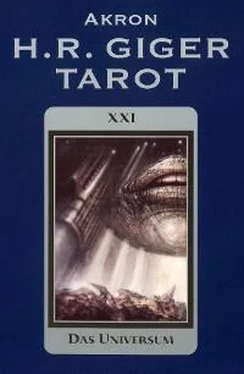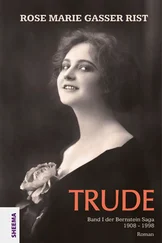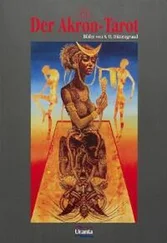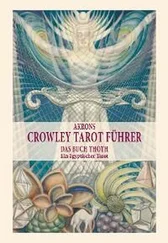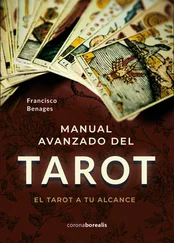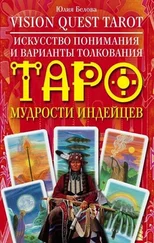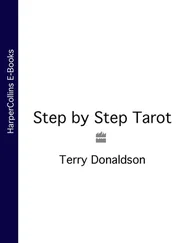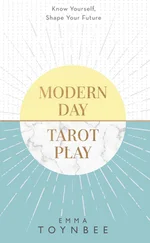H. R. Giger - H. R. GIGER TAROT
Здесь есть возможность читать онлайн «H. R. Giger - H. R. GIGER TAROT» — ознакомительный отрывок электронной книги совершенно бесплатно, а после прочтения отрывка купить полную версию. В некоторых случаях можно слушать аудио, скачать через торрент в формате fb2 и присутствует краткое содержание. Жанр: unrecognised, на английском языке. Описание произведения, (предисловие) а так же отзывы посетителей доступны на портале библиотеки ЛибКат.
- Название:H. R. GIGER TAROT
- Автор:
- Жанр:
- Год:неизвестен
- ISBN:нет данных
- Рейтинг книги:4 / 5. Голосов: 1
-
Избранное:Добавить в избранное
- Отзывы:
-
Ваша оценка:
- 80
- 1
- 2
- 3
- 4
- 5
H. R. GIGER TAROT: краткое содержание, описание и аннотация
Предлагаем к чтению аннотацию, описание, краткое содержание или предисловие (зависит от того, что написал сам автор книги «H. R. GIGER TAROT»). Если вы не нашли необходимую информацию о книге — напишите в комментариях, мы постараемся отыскать её.
H. R. GIGER TAROT — читать онлайн ознакомительный отрывок
Ниже представлен текст книги, разбитый по страницам. Система сохранения места последней прочитанной страницы, позволяет с удобством читать онлайн бесплатно книгу «H. R. GIGER TAROT», без необходимости каждый раз заново искать на чём Вы остановились. Поставьте закладку, и сможете в любой момент перейти на страницу, на которой закончили чтение.
Интервал:
Закладка:
We therefore managed to persuade the publisher not simply to produce a shorter version of Baphomet , but to work on a whole new concept with us. We sacrificed the “Mephistophelean” stories, brain twisters and mental games that often tackled the duality of collective thinking. We either left these out completely or included abbreviated versions of them in the description of the cards. But to compensate for this, we expanded the interpretation section into the main focus of the work. Although we lost the Baphometic philosophical superstructure, this meant that we gained a compact book of tarot interpretations that was easier to understand. We have therefore called it simply, but appropriately, The H.R. Giger Tarot .
Lake Constance, Walpurgis 2000
Akron
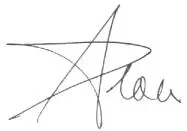
INTRODUCTION
If a piece of roofing tile falls on a person’s head, and he is a “realist,” he will blame the incident on the owner of the house and possibly even hold this person responsible. The “realist” can therefore begin with the externally perceivable effect, such as a head injury, and relate it to an externally perceivable cause, which is a roof in need of repair. However, an “esotericist” would draw the reverse conclusion: this individual would begin with the externally perceived effect to an inner, suspected cause. For example, such a person might wonder what his “Higher Self” was trying to tell him by causing him to pass by the house at the exact moment when the tile fell down.
Which of these is the correct approach? Both are right – at least from the perspectives of the “realist” and the “esotericist.” The roof was in need of repair, and this fact undoubtedly represents one reason for the described effect. But the fact that the injured person was passing at the exact moment when the tile fell just as unequivocally represents a major factor in this occurrence. So we see that these two causes together produced the effects of the accident. In this respect, it is quite possible that the event is an example of what the psychologist C.G. Jung termed “synchronicity.” In everyday language, this denotes a meaningful coincidence. We have probably all experienced such an occurrence at one time or another. Synchronicity of events means that the two occurrences are not joined by causality; instead, they are related to each other by some means, which cannot be rationally fathomed or explained. This means that an inner relationship might exist between outwardly unrelated factors: a relationship of synchronicity. This could be expressed as a “whenever-then” relationship. Whenever I am particularly drawn to card XVI, the Tower (when it surfaces in the spreads with conspicuous frequency), then one of my own ideas collapses in the world around me.
This certainly does not mean that the tarot should receive some type of rational justification. Yet, Jung’s attempt is trailblazing in expanding our linear and causal ways of thinking. As long as we remain aware that images are only images, even on the symbolic level, and agree with Goethe that everything visible is merely an allegory, then we can think of the pictures and symbols of tarot as a door behind which is the numinous or unspeakable.
The Tarot as a Model of Our Hopes and Fears
So let us imagine the tarot as a door that reveals a different panorama each time we reshuffle and lay the cards. The cards represent their own particular cosmos, a miniature model of all sequences of events in the world. They provide us with the pattern for a reality, which we then interpret from our own personal point of view. At any moment in time, the world and human beings form a complex fabric of cause and effect. But because the world is not simply as it is in our eyes, but only becomes what it is through our own imagination, we can consider reality as a complex fabric that takes form only as a result of the interplay of all its components, including human understanding.
In terms of the tarot’s model of reality, this means that no card exists of its own accord or just on its own. Nor should it be seen independently from the observer since it only exists in relation to other cards. And in each of these possible relationships it exists – depending on the observer’s viewpoint – in a different form. Conversely, the observer has no objective standards of value or overall perspectives, despite the fact that these are only objects, which are what they are. Because we do not see the objects as they are, but rather merely as we are able or willing to see them, each act of seeing can only ever be the perspective of our own imagination. But the roots of this concept are our hopes and fears. Our feelings are what make us “recognize” everything that we observe through the subjective lens of our inner state of mind. Nevertheless, we give the name of reality to what we ultimately see.
Consequently, we are only able to see the cards in relation to our hopes and fears. So there is no view of the cards that would not change as soon as our hopes and fears changed. The individual imagination consists of unconscious yearnings and anxieties that are attracted precisely to those events (cards) in the world that confirm them. It is therefore clear that tarot does not in any way question the law of cause and effect; on the contrary, it simply provides a broader perspective within this law. If we shuffle and lay the cards, we are creating a reflection of our own small portion in the overall situation. In the process, we suppose that even so-called “coincidence” is essentially determined. That is to say, it is decided by the force field of the will that arises from the center of feeling and in turn is bound to the contents that present themselves to the will in the form of destiny. Through the filter of the imagination, the eternal now becomes commonplace. And this eternal quality, which is integrated into everyday life, always imparts a sense of yearning: a yearning for God.
This is particularly apparent in the tarot. When laying the cards, experts try to find certain forms and structures so that they can recognize the spirit of the eternal beyond everyday meaning. This is because they instinctively know that their yearnings are only the shadow of the spirit that sits enthroned beyond the perceivable.
Synchronicity of the Internal and External
It is therefore in no way true that the cards “predict” destiny. Rather, we transfer our present state of mind onto the cards and then, by transferring it back, read the unconscious expectations that we initially projected onto them. The use of tarot cards makes it possible for us to observe the world in the mirror of our inner expectations, and to understand these as a true illustration of the ideas and convictions surrounding our inner meaning. The cards alone can never be destiny; they merely indicate how our inner sense approaches the world. We could say that they try to draw attention to those symbols that are the mirror of our internal and external processes in a synchronic form. When external events occur, they must first take place on the level of the soul before they can actually be translated into the material level. The explanation offered by the cards is one of the many possible ways of feeling these inner currents and recognizing them as the original source of all action, as the plans whose materialization is what we subsequently call experienced reality.
The Internal Reality!
In other words, the world as it portrays itself to us always corresponds to the sum of our experiences that we are consciously able to comprehend. We create our levels of reality through the effects of our actions; these effects of our actions simultaneously create the identity of our ego. Each of us creates our destiny through our unconscious traits, and our destiny is then separated from these traits and perceived as an external event. In this way, we can avoid recognizing that our human strivings are directed not towards knowing the world, but rather at constantly affirming ourselves in our inner patterns of destiny. Each moment in time therefore represents only a part of our time/space continuum, while our present attracts the patterns of experience that we are still lacking in order to integrate them into our consciousness. Consequently, each of us creates a quality to life that we realize through our unconscious inner intentions and then call it “destiny.” We would like to recognize these “higher” workings, which form both the basis and the goal of our path through life. But we are playing with fire when we do this because as soon as we think about how we feel inside, we surrender either to limitations in our own patterns of thinking or to the dangerous world of philosophical models.
Читать дальшеИнтервал:
Закладка:
Похожие книги на «H. R. GIGER TAROT»
Представляем Вашему вниманию похожие книги на «H. R. GIGER TAROT» списком для выбора. Мы отобрали схожую по названию и смыслу литературу в надежде предоставить читателям больше вариантов отыскать новые, интересные, ещё непрочитанные произведения.
Обсуждение, отзывы о книге «H. R. GIGER TAROT» и просто собственные мнения читателей. Оставьте ваши комментарии, напишите, что Вы думаете о произведении, его смысле или главных героях. Укажите что конкретно понравилось, а что нет, и почему Вы так считаете.
